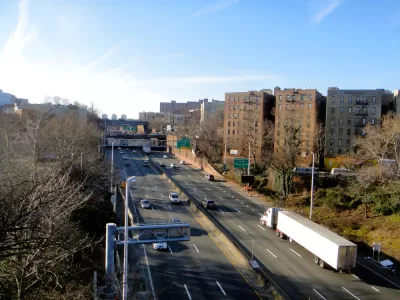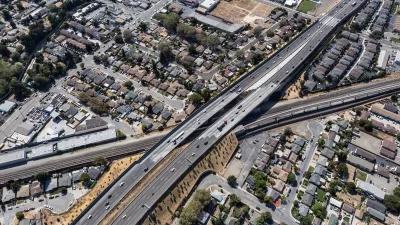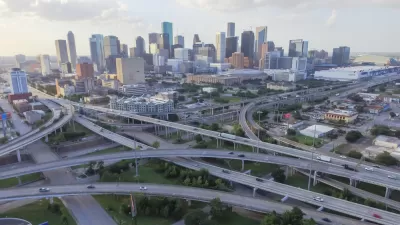Instead of removing urban freeways, which have proven to be destructive to communities and economies—in some cases deliberately so—many cities are expanding freeways in and around cities.

The New York Times recently published an interactive opinion piece that provides visual evidence of the mark left by freeways and highways on dense urban communities with maps and historic aerial photography superimposed with contemporary images.
The article was written by Adam Paul Susaneck, who might be more familiar to some readers as the founder of the Segregation by Design, a blog and Instagram account dedicated to documenting the destruction of transportation planning and housing and land use policy on communities of color in the United States.
“Through a series of stark aerial before-and-after comparisons, figure-ground diagrams, and demographic data, this project will reveal the extent to which the American city was methodically hollowed out based on race. The project will cover the roughly 180 municipalities which received federal funding from the 1956 Federal Highway Act, which created the interstate highway system,” according to the Blog’s about page.
The New York Times article deploys that methodology in the article, first by focusing on the North Houston Highway Improvement Project, a project underway by the Texas Department of Transportation to widen Interstate 45 near downtown Houston, displacing an estimated 1,000 households and multiple other businesses and cultural resources in the process. Susaneck cites the project of an example of the same destructive planning practices of the 1960s at work in the 2020s.
“Rather than being a rare exception, projects like this one fit a longstanding pattern of how the United States chooses to force highways through communities with the least political power to resist. A Los Angeles Times analysis found that expansions of existing highways have displaced more than 200,000 people over the past three decades, predominantly in nonwhite neighborhoods,” writes Susaneck.
Other examples of car-centric planning and discriminatory housing practices gutting urban communities include the Cross Bronx Expressway, famously championed by Robert Moses, restrictive covenants in Minneapolis, and urban renewal in Chicago.
“The urban highway network and the urban renewal projects it spawned are tools of systemic discrimination. They’re also in terrible shape: The American Society of Civil Engineers gives the overall condition of America’s roads a D grade. As many of the highways built in the 1950s and ’60s reach the end of their useful life, now is the perfect opportunity to radically rethink the urban environment that shapes social relations within American city life,” writes Susaneck.
FULL STORY: Mr. Biden, Tear Down This Highway

Planetizen Federal Action Tracker
A weekly monitor of how Trump’s orders and actions are impacting planners and planning in America.

Map: Where Senate Republicans Want to Sell Your Public Lands
For public land advocates, the Senate Republicans’ proposal to sell millions of acres of public land in the West is “the biggest fight of their careers.”

Restaurant Patios Were a Pandemic Win — Why Were They so Hard to Keep?
Social distancing requirements and changes in travel patterns prompted cities to pilot new uses for street and sidewalk space. Then it got complicated.

Albuquerque Route 66 Motels Become Affordable Housing
A $4 million city fund is incentivizing developers to breathe new life into derelict midcentury motels.

DC Area County Eliminates Bus Fares
Montgomery County joins a growing trend of making transit free.

Platform Pilsner: Vancouver Transit Agency Releases... a Beer?
TransLink will receive a portion of every sale of the four-pack.
Urban Design for Planners 1: Software Tools
This six-course series explores essential urban design concepts using open source software and equips planners with the tools they need to participate fully in the urban design process.
Planning for Universal Design
Learn the tools for implementing Universal Design in planning regulations.
Heyer Gruel & Associates PA
JM Goldson LLC
Custer County Colorado
City of Camden Redevelopment Agency
City of Astoria
Transportation Research & Education Center (TREC) at Portland State University
Camden Redevelopment Agency
City of Claremont
Municipality of Princeton (NJ)





























